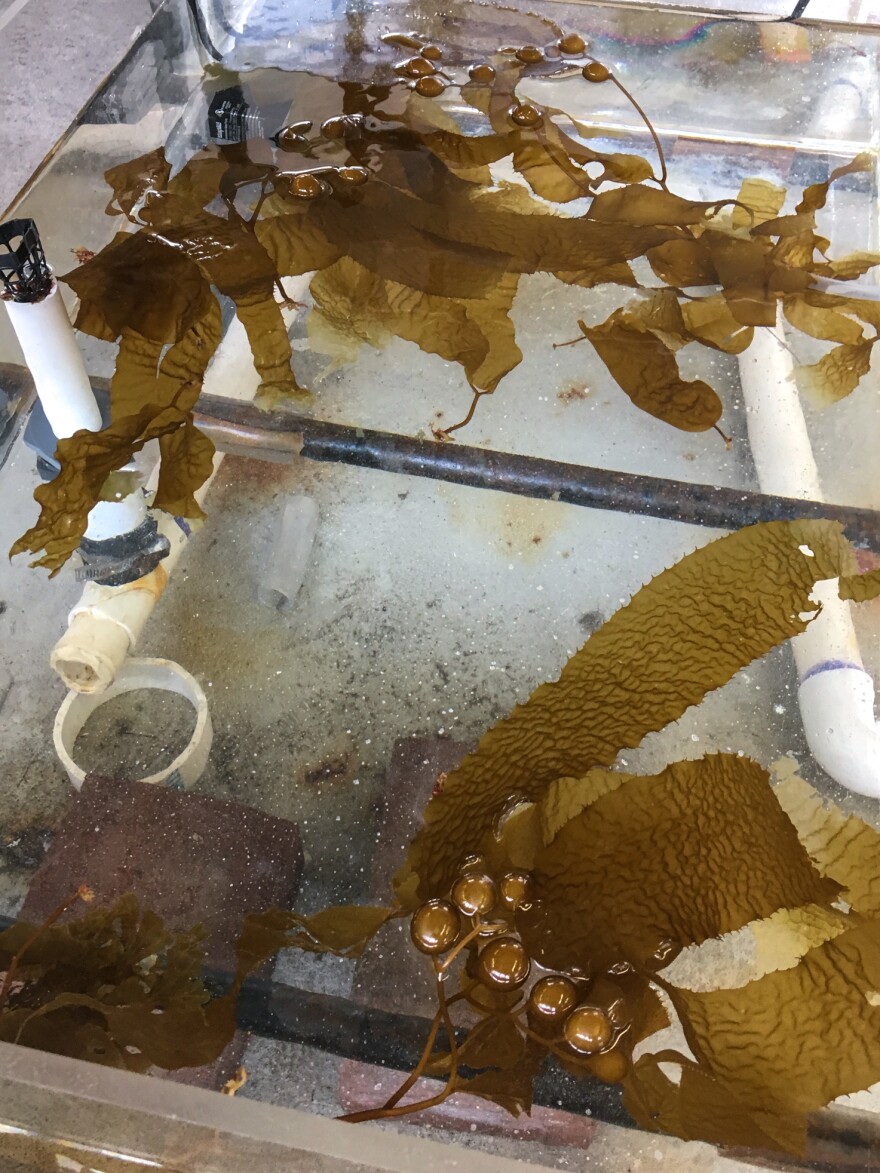
The push for renewable energy in the U.S. often focuses on well-established sources of electricity: solar, wind and hydropower. Off the coast of California, a team of researchers is working on what they hope will become an energy source of the future — macroalgae, otherwise known as kelp.

The Pacific Coast is known for its vast kelp forests. It's one of the fastest-growing plants on Earth, and farming it requires no fertilizer, fresh water, pesticides, or arable land. "It can grow 2 to 3 feet per day," says Diane Kim, one of the scientists running the kelp research project at the University of Southern California.
Kelp is transformed into biofuel by a process called thermochemical liquefaction. The kelp is dried out, and the salt is washed away. Then it's turned into bio-oil through a high-temperature, high-pressure conversion process.
Some small companies are growing kelp as a substitute for kale in the U.S., but that's exactly the problem – very, very few are doing it. Thus, the infrastructure and investment isn't in place to make other products from kelp, like biofuel.
"We're testing out a concept that would enable large-scale, open-ocean farming," she says. "And what that would essentially do is grow enough kelp to make it economically feasible to make it cost competitive and maybe one day, provide a source of clean, sustainable, non-polluting source of energy to compete with fossil fuels."
Twenty-five miles from downtown Los Angeles, on sunny Catalina Island, Kim and her colleagues operate a center called the Wrigley Institute of Environmental Studies. The clean, deep waters off the island provide a great environment for research.

Harvesting kelp in California for commercial purposes is not unprecedented. "They did have these large boats that gave the kelp a haircut, harvesting kelp along the California coast," Kim explains. During World War I, kelp was used to make gunpowder. By the 1960s, a company in San Diego harvested kelp to make products like alginate, which is a solidifying agent in ice cream and cosmetics.
Here on Catalina Island, Kim and her colleagues are trying to build a machine that would raise and lower kelp beds to get sunlight in the shallow water and nutrients in the deep water. This would allow them to farm miles from shore. They call the device a "kelp elevator."
There are real obstacles to creating large-scale kelp farms in the U.S., though.
"At the moment, they're way behind the curve," says University of Hawaii tenured researcher Michael Cooney of the Hawaii Natural Energy Institute. He says countries in Asia and Scandinavia are much farther along than the U.S.
One of the main reasons for this discrepancy is that these countries have been growing kelp for food for many years. "They already have a pre-existing infrastructure that's pretty sophisticated for growing and harvesting," Cooney explains. "It's harvesting for food and other products, but a lot of that capital's already in place. And that's a much better starting point than small companies in the U.S. that try to go from ground zero to a transportation fuel."
In Sweden, people have been farming seaweed for a long time. "The first thing we do with the high-quality kelp, we do it for food, actually, "says Fredrik Grondahl of the Royal Institute of Technology in Stockholm. He says selling kelp for food is very profitable.
"The next part is to make feed ingredients," Grondahl adds. "And then we are also extracting polymers from the kelp to do bioplastics and adhesives and maybe also textiles." The leftover kelp is turned into biofuel, so the clean energy aspect is just one of many uses for kelp in Scandinavia.
The Wrigley Institute scientists don't use natural populations of kelp, but grow their own in a nursery, starting from spores. They tie the juvenile kelp to long, white PVC pipes and drop them into the water. Eventually they hope to create sheets of kelp plants hundreds of yards across.

Ken Nealson, director of the Wrigley Institute, takes us out onto the water in a boat to see the test site where they've already dropped a pipe 30 feet below the surface, with small kelp plants sprouting off of it. Nealson straps on scuba gear and dives down to inspect the project, while bass and other marine life circle around him.
"What you see here is the beginning of something that can really revolutionize bio-fuel production, if it works on a large scale," he explains. "You can imagine growing enough kelp to supply a percentage of the bioenergy that's needed in this country."
"Imagine" is the key word here. This experiment is in its earliest stages. By September, the researchers hope to put a full-scale kelp elevator in the water. And if that works, then someday years from now, endless miles of ocean could one day become farmland.
Copyright 2024 NPR





